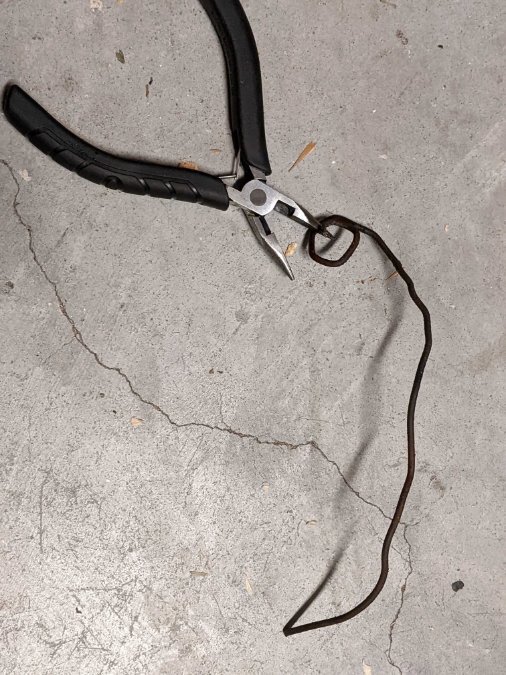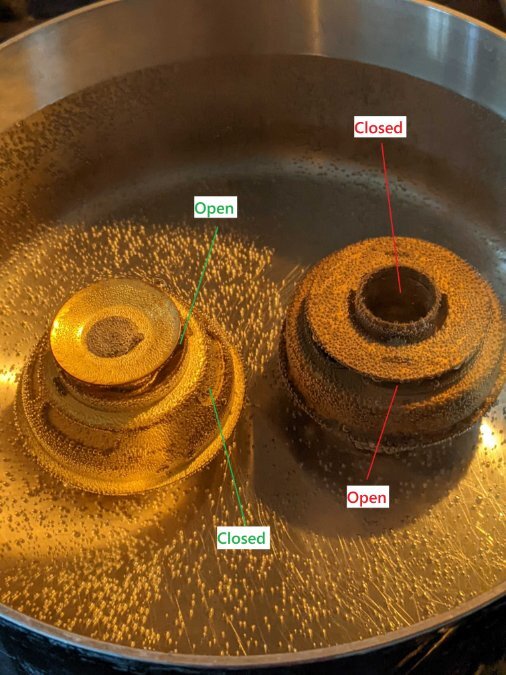
Ivan_B
Members-
Posts
1,173 -
Joined
-
Last visited
-
Days Won
13
Everything posted by Ivan_B
-
There you go Try going through the linkage adjustment process, described in the manual.
-
Are you able to shift when the engine is turned off? How about when you manually move the levers under the car? If moving the levers by hand is not a problem, the linkage must be at fault.
-
1947 Chevrolet Other Pickups
Ivan_B replied to jameshanks's topic in Ebay, Craigslist and External Site Referrals
But did you see the extra nuts? ? -
It says "Australia" and gives an address at the bottom of the flyer. ?
-
Well, you still made an offer, so it wasn't totally bad. The few cars I've seen, the last time I was looking, were a total no-no
- 42 replies
-
- special deluxe
- 1948
-
(and 1 more)
Tagged with:
-
Well, makes sense. I just don't like adding a lot of aftermarket stuff to the car, so a smaller inline filter seems to be more appealing than a full-size remote one (unless it is hidden under the car). I am just experimenting, for now. The strainer is about $15-20, it is a metal screen, so you just unscrew the bowl and flush it. The valve and fittings are probably another $20. I'll see how it looks and work. If I don't like it I'll remove it. A proper remote coolant filter appears to be a more involving setup. Maybe I'll do it later
-
That was also my first impression - probably a fake police car, hence all the extra cost ?
- 42 replies
-
- special deluxe
- 1948
-
(and 1 more)
Tagged with:
-
And that will probably be the same story with a good majority of the vehicles you see, regardless of the price range and advertising condition. Have you been looking for a while, or was this a random impulse decision? Always ask the far-away seller for more pictures. The ones that tell you that the car is in great shape, etc., and then find 101 excuse why more/better/larger pictures are unavailable - are full of "nonsense" Show winner - means nothing (unless properly judged, etc.), since most people cannot tell a difference anyway, as long as the paint is pretty... We have some rather bad cars on the floor at the local classic car museum, for example. Always beware of the pretty new paint.
- 42 replies
-
- special deluxe
- 1948
-
(and 1 more)
Tagged with:
-
Thanks for looking into this. I've done some tube research, and it seems that there are at least a few people, out there, who use filters on cars. The most common seems to be a fuel filter (or an oil filter with a remote flange) on a heater hose setup. The solution I will try is a pressure sprayer strainer with a spin down bowl, which is easier to clean. Apparently, the household sediment filters/strainers are not rated for the required temperature. The sprayer strainer is rated at 140-150F but at high pressure. Without pressure it can hold greater temperature (there is a confirmed use case for coolant filtering). The finest I've found is 200 mesh (74 microns) and this is what I'll try (people report good results with even coarser mesh). The only down side is I have to order parts. Tractor supply sells these, but they are non-transparent (not fun ) and I need the matching color valve, adapters, clamps, etc., to make it look reasonably acceptable under the hood... I'll be back with a report after a while.
-
Come on, guys, this is not funny... The above statement actually made me stop and think, for like ~3.5 seconds... ? This must be a long awaited "hello" from the Chrysler engine casting techs. No other ideas how it got there.
-
Another great find from inside the engine: This was tucked inside the head, behind the spark plug holes. I incidentally stumbled upon it, when feeling the perimeter of the thermostat opening, for debris, with my finger. Hopefully, I did not pull anything important ?
-
Hi Joe, You are basically describing a standard acid flush. I did not dare to do that, just reverse-flushed the block, radiator, and the heater with tap water, and then with distilled water (to get the tap water out/diluted). I did get some muddy water from the radiator, at first, which cleared overnight to reveal some calcium deposits. The antifreeze that I drained, produced no sediment, so this is good. I might use the acid, next time. I wasn't even planning to flush... Just wanted to replace the old hoses ? You are right, though. The fact that virtually no manufacturer installs coolant filters probably suggest that this is not necessary... As long as you flush the system and change the coolant regularly.
-
Has anyone used these? I am thinking about installing an inline coolant filter, to catch debris remaining inside the cooling system. I did a quick water flush, but that does not get rid of all the contamination inside the system, and I do not have the means to disassemble the engine, etc., to do a proper cleaning, at this time There are specific automotive filters available, that go into the top radiator hose. But these have a rather large mesh (not very effective) and I do not really want to mess-around with the radiator flow. How about putting a regular bowl water supply filter/strainer into the heater return hose? These have a considerably smaller meshes and the bowl might even clean some smaller sediment. I just need to find one rated for boiling water. Do you think it will filter much at the heater line? ?
-
I believe that the author is experiencing exactly the opposite symptoms ?
-
That might be a different issue. Are we talking about idle or driving? How about the engine temperature? Did you do anything to the car before it started running poorly? Could be even non-carb related
-
What's going on, you press the pedal but it ain't going? Or something else? Check the accelerator pump and float level. These two things, alone, probably take care of the many carb issues.
-
Not on these, apparently (which I did not even know, because my older model has a simple aluminum profile), but in general
-
Door sills like that (aluminum or stainless) were popular on many cars.
-
Titles to real estate, in general, are somewhat incongruent with the Anglo-American common law (the State of Louisiana being an exception) But they certainly simplify things so much!
-
The NOS Thomson thermostat I got, also has the same insignia on the back. B&B must've produced the bellows and sold these to various thermostat manufacturers... Or different places were simply branding their thermostats.
-
Resurrecting this old topic, momentarily I've been watching some PDR videos, educating myself about the different techniques, etc., and thinking about buying a couple of tools and taking a stab at my own dents. Just noticed this video, where they fix a large door dent on a 1951 car. This is not a very difficult dent, but still, there were 3 sharp creases etc, and it came right out (after a few hours of massaging the metal, that is). It looks like the technique is definitely usable on old cars as well. Looking back at the SuperGas61 's dents, it look like a job for some heat, glue puller, and manual pushing. You can even try some of these yourself. Look at this guy, for example: You will not be able to make it go away, as if it wasn't there, with just the glue, but check how much better it looks after just a few pulls...
-
That looks very good... Are you using stainless/aluminum screws as well? I hate to ask again, but would you please consider oiling your floors/rockers with liquid undercoating? I keep looking at all this surface rust, underneath the new interior pieces, before bedtime, and can not sleep well ? Also, would you share some pictures of the design process? I am not a metal specialist, but I guess that you rolled or pushed/slided the grooves using some sort of DIY stand? Or do you simply have sheet-metal equipment in the garage and been doing this for a while? ?
-
Not this time. I am not planning on removing anything, just changing the thermostat and hoses. Will flush the block, radiator, and heater with water, that's all. I suspect that the block should not be that bad, since my drain was not even stuck ? At least, I'll see what the flush brings out, first.
-
I own a Canadian 1948 dodge business coupe special deluxe
Ivan_B replied to 1948DodgeD25S's topic in P15-D24 Forum
Or the steering box. -
It could, when the current working temp is below the maximum thermostat threshold, which can be the case under certain conditions. I do know about the OEM temp and efficiency, though, that's true. Anyway, is seems you guys won, this time. Here is a fresh pot test: Both old and new stats open at the same time, and both still work ? The car is running fine on the road, it's just I get nervous at a parking lot or the light when the needle starts to fluctuate toward the right. I know it is very likely still within specs, for these cars, but still... My radiator is clean on the outside. The system will be flushed today. Never heard about the paper trick to check the fan, will try that, thanks.




